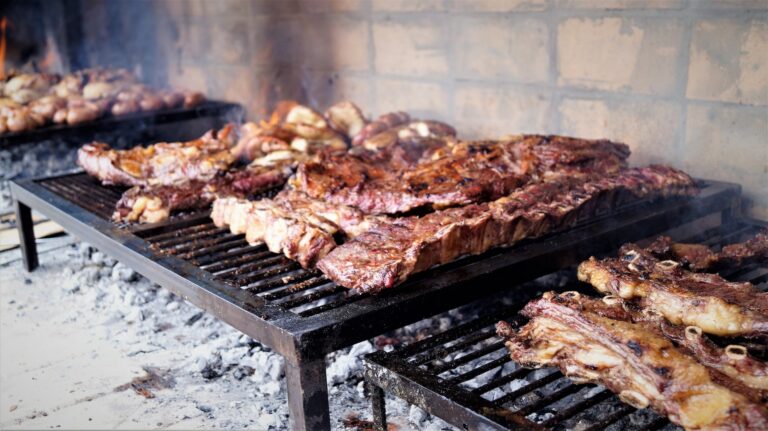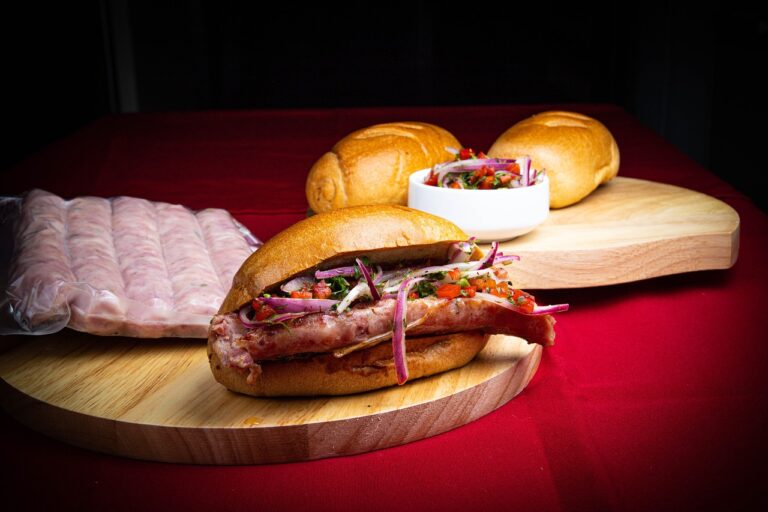Argentina is home to lots of good food. With much influence from countries like Italy and Spain, Argentina enjoys a fantastic cuisine! The primary ingredient of an Argentinian’s diet is beef, given the large scale of production in the country, and generally, people appreciate good, home-cooked food!
There are plenty of restaurants though across Buenos Aires and the rest of Argentina for you to try out the country’s meat and wine, but did you know about all of these typical Argentinian dishes? Keep reading to discover five different Argentinian foods that will leave you with your mouth watering!
1. Asado

“Asado” is basically the Argentinian word for “barbecue”, and it’s one of the best things about Argentina! The country is best known for its meat and wine and so if you go to Argentina, you need to try a traditional asado!
Generally, asado is eaten every Sunday in Argentina and is treated as a way of bringing families together. Any special events during the year are usually accompanied by an asado too; forget turkey at Christmas – it’s steak all round! Several different cuts of meat are usually served, and the person who cooks the asado is known as the “asador”.
There are many great restaurants in Buenos Aires where you can try a traditional asado, so don’t worry if you don’t know anyone who can cook you one!
2. Empanadas

Empanadas are eaten in many countries around the world, but particularly in Spain and Latin America. They involve a crispy pastry, either fried or baked, with several different fillings. In Argentina, some of the most popular are beef, chicken and ham and cheese.
There are tonnes of places to eat empanadas in Argentina, but a lot of the time the homemade ones are the best! They’re not too difficult to make, so if you fancy giving it a try, check out our simple recipe here!
Personally, the best empanadas I have eaten in Argentina were in Patagonia. If you’re ever in Bariloche, be sure to give Rincón Patagónico a visit, and order the “empanadas de cordero” (lamb empanadas). You’re welcome!
3. Milanesas

The traditional Argentinian milanesa involves a thin piece of beef being covered in bread crumbs, although chicken can also be used too. It can either be fried or cooked in the oven. Something very simple, milanesas are usually seasoned with lemon juice and served with either mashed potato or fries.
Although not something unique to Argentina, the milanesa is definitely a staple food of the average Argentinian and one-hundred percent something you should try! They’re also very easy to make, so search a recipe and give it a try yourself!
4. Choripan

Choripan (or “chori”, for short) comes from “chorizo” (a type of sausage) and “pan” (bread in Spanish). The choripan is usually served as a part of a traditional Argentinian asado and you’ll find that it’s a step up from a regular hotdog!
The choripan can be eaten just as it is (chorizo and bread), but it’s best served with a dash of chimichurri (see below). You can also add vegetables/salad as pictured above!
5. Chimichurri

Chimichurri is a type of sauce which originates from Argentina and Uruguay. It is really easy to make, containing just parsley, garlic, oregano, chilli flakes, olive oil and vinegar. This is all mixed together to form a delicious sauce which is primarily eaten with meat – chimichurri is a key part of any asado!
It isn’t clear where the name “chimichurri” came from, but it is often said in Argentina that the word comes from “Jimmy’s curry”. Supposedly, during the 1800s, Jimmy was an Englishman who aided in achieving Argentina’s independence. With “Jimmy’s curry” being difficult to pronounce for the Argentinians, the word “chimichurri” was born. Whether it’s true or not isn’t really known!
Have you tried any of these foods? Let us know what you thought in the comments below!


I´ve been to different countries in South America but Argentinian empanadas are no doubt the best ones. Especially the ones from the north region of the country. 10/10